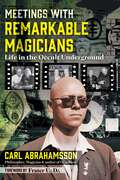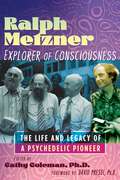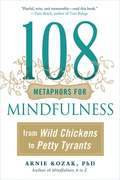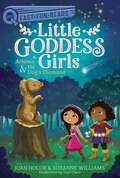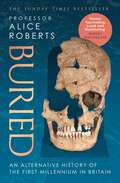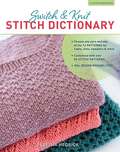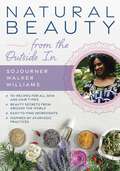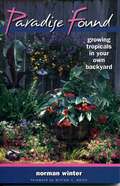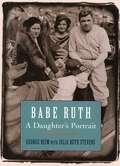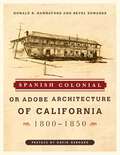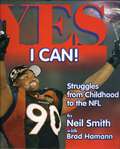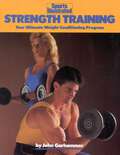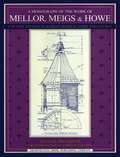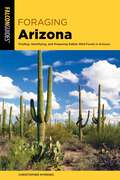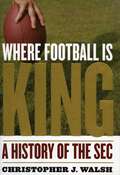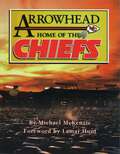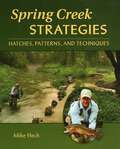- Table View
- List View
Ultimate Guide to Fishing South Florida on Foot
by Steve KantnerFrom a veteran South Florida angler comes the first fly and light tackle do-it-yourself guide to the region, focusing on fishing opportunities that don't require a boat.
Meetings with Remarkable Magicians: Life in the Occult Underground
by Carl Abrahamsson• Explores the author&’s extensive connections with infamous occultists and organizations, including Genesis P-Orridge and Thee Temple Ov Psychick Youth, Anton LaVey and the Church of Satan, and the Ordo Templi Orientis• Details the underlying occult impulses and magical experiences guiding the author&’s artistic journey, his experiences in psychedelic culture and the punk subculture, and his experimentation with sex magic, occulture, and sigil magicWhat does it mean to live a life as an occultist? There may be no single answer, but for Carl Abrahamsson, it has entailed work in music, art, and film as well as deep engagement with renowned occult figures and organizations for more than 40 years.Illustrating the possibilities of a life infused with magic, Abrahamsson reflects on his decades spent in the company of some of the most unconventional thinkers of the late 20th and early 21st centuries. He reveals his involvement with psychedelic culture, the punk subculture, and numerous occult figures and organizations, including Genesis P-Orridge and Thee Temple Ov Psychick Youth, Anton LaVey&’s Church of Satan, the Ordo Templi Orientis, and a branch of the American Golden Dawn.Interwoven with his occult experiences and meetings with infamous practitioners of magic, Abrahamsson describes his evolution as a multidisciplinary artist, always imbuing his diverse artistic practice with a developing occult philosophy. He also details his ongoing efforts to disseminate the occult arts via publishing companies like Psychick Release, Looking Glass Press, Edda Publishing, Trapart Books, and the occultural journal The Fenris Wolf—as well as fieldwork in Tibet, Nepal, and India through the Institute of Comparative Magico-anthropology. Through each encounter and reflection on the magical, shamanic, and mystical practices that structured his own life, Abrahamsson illuminates how it&’s possible to experience a life of wisdom and miracles.
Ralph Metzner, Explorer of Consciousness: The Life and Legacy of a Psychedelic Pioneer
by Cathy Coleman• Includes contributions from Rick Doblin, Charles S. Grob, Stan Grof, Stanley Krippner, Dennis McKenna, the late Christian Rätsch, Richard Strozzi-Heckler, Claudia Mueller-Ebeling, Dorothy Fadiman, Luis Eduardo Luna, and others• Explores Ralph&’s childhood, his time at Harvard with Timothy Leary and Richard Alpert (Ram Dass), his work with Agni Yoga and transpersonal psychology, his development of ecopsychology, and his in-depth psychedelic researchRenowned as a pioneering psychologist, psychedelic elder, alchemical explorer, and shamanic teacher, the late Ralph Metzner (1936–2019) contributed profoundly to consciousness research, transpersonal psychology, and contemporary psychedelic studies across his more than 50-year career.Celebrating the life and legacy of Ralph Metzner, this book explores how Ralph touched the lives of those around him in extraordinary and remarkable ways, recasting people&’s worldviews and inspiring the flowering of creativity, personal growth, and spiritual transformation. There are recollections from the pivotal years of the Sixties, when Ralph conducted research with Timothy Leary and Richard Alpert (Ram Dass). Other contributors describe Ralph&’s involvement in the School of Actualism in the 1970s and the profound impact that Agni Yoga had on Ralph&’s explorations of consciousness and his healing therapies. We also learn about Ralph&’s development of Green Psychology, or ecopsychology, his mystical work exploring prenatal realms of consciousness and channeling, and his healing and transformative &“Vision Circles.&” Academic colleagues and a who&’s who of fellow psychedelic researchers share stories from their work with Ralph, illuminating his depth of knowledge and broad impact. This book paints a complete portrait of Ralph Metzner in his well-known roles as therapist and psychedelic pioneer and as an intrepid explorer of consciousness until the very end of his life.
108 Metaphors for Mindfulness: From Wild Chickens to Petty Tyrants
by Arnie KozakFrom the author of Mindfulness A to Z!This engaging and accessible little book is filled with both humor and profound teaching. It presents 108 metaphors for mindfulness, meditation practice, the nature of the self, change, deep acceptance, and other related concepts that Dr. Kozak has cultivated over twenty-five years of meditating, practicing yoga, and working as a clinical psychologist. Metaphors are indispensable to understanding mindfulness, and to help deeply internalize it and make it a part of everyday life. These mentally catchy images can motivate us to practice, show us how and where to bring mindfulness to life in our personal experience, and help us employ powerful methods for transformation. This book was previously published under the title Wild Chicken and Petty Tyrants.
Tumblebugs and Hairy Bears
by Suzanne SamsonIn this imaginative nature book, children learn about insects and are entertained with outrageous illustrations that bring them to life.Ages 6-10
Artemis & the Dog's Diamond: A QUIX Book (Little Goddess Girls #12)
by Joan Holub Suzanne WilliamsArtemis and Orion help each other on their quests in this twelfth Little Goddess Girls story—part of the Aladdin QUIX line!Artemis is on the final quest to bring the last missing jewel—a diamond—back to Zeus. She ends up in the Forest of Lost and Found, where she meets a young hunter named Orion. He&’s looking for something, too: a dog! With some extra magic and the power of friendship, can Artemis and Orion both find what they are looking for?
Targeted: The 1983 Marine Barracks Bombing and the Untold Origin Story of the War on Terror
by James M. Scott Jack CarrThe first in a new in-depth nonfiction series examining the devastating terrorist attacks that changed the course of history from #1 New York Times bestselling author Jack Carr and Pulitzer Prize finalist James M. Scott, beginning with the 1983 Marine barracks bombing in Beirut. 1983: the United States Marine Corps experiences its greatest single-day loss of life since the Battle of Iwo Jima, when a truck packed with explosives crashes into their headquarters and barracks in Beirut, Lebanon. This horrifying terrorist attack, which killed 241 servicemen, continues to influence US foreign policy and haunts the Marine Corps to this day. Now, the full story is revealed as never before by Jack Carr and historian and Pulitzer Prize finalist James M. Scott. Based on comprehensive interviews with survivors, extensive military records, as well as personal letters, diaries and photographs, this is the authoritative account of the deadly attack.
Buried: An alternative history of the first millennium in Britain
by Alice RobertsA SUNDAY TIMES BESTSELLER &‘Tender, fascinating … Lucid and illuminating&’ Robert Macfarlane Funerary rituals show us what people thought about mortality; how they felt about loss; what they believed came next. From Roman cremations and graveside feasts, to deviant burials with heads rearranged, from richly furnished Anglo Saxon graves to the first Christian burial grounds in Wales, Buried provides an alternative history of the first millennium in Britain. As she did with her pre-history of Britain in Ancestors, Professor Alice Roberts combines archaeological finds with cutting-edge DNA research and written history to shed fresh light on how people lived: by examining the stories of the dead.
Texas Organic Vegetable Gardening: The Total Guide to Growing Vegetables, Fruits, Herbs, and Other Edible Plants the Natural Way
by Howard GarrettThis book shows you how to have healthy soil and recommends environmentally safe products and even some homemade remedies to control pests and diseases in your garden. It describes more than 100 food plants and gives specific information on the growth habits, culture, harvest, and storage of each.
Switch & Knit Stitch Dictionary: Choose any yarn and any of the 12 PATTERNS for cowls, hats, sweaters & more * Customize with over 85 STITCH PATTERNS * 700+ DESIGN POSSIBILITIES
by Tabetha HedrickNow it's easy to design your own knit! Start with one of the 12 basic pattern recipes for pieces such as a hat, pullover, shawl, scarf, socks, tee, mitts, tunic, or cardigan. Choose nearly any yarn and a stitch pattern from the 85 4-stitch multiple patterns in the stitch dictionary, and you are on your way to your own unique knitted piece. Make cabled mitts, a lace cardigan, a textured stole, a ribbed pullover, or any of over 700 possible combinations. Best yet, you can knit with any yarn that works to a gauge of 3-8 stitches per inch, so you can use that perfect yarn in your stash you've been saving and design just the right project for it. It is so exciting to make your own one-of-a-kind knits, and this book makes it so easy!
Natural Beauty from the Outside In: 70+ recipes for all skin and hair types
by Sojourner Walker WilliamsTake control of what goes into your body with your own natural skin and hair care products!Our skin is our largest organ and absorbs like a sponge what is placed on the outer layer, drawing it deeper into the inner layers and dispersing it into the bloodstream. Many of the bath and beauty products we use contain toxic chemical substances, but it is easy to make your own safe, natural alternatives. Sojourner Walker Williams has been perfecting her natural beauty products for years and is trusted by her many faithful consumers. She is an Ayurvedic practitioner, yoga instructor, and wellness blogger, and in her travels has sought out natural, effective beauty solutions from around the world. In Natural Beauty From the Outside In she takes you with her on her journeys of discovery around the world. Travel with her to Thailand, where she discovers the miracles of coconut oil, and to Ghana, where she learns of the many uses of shea butter. Each chapter is devoted to a location and an important ingredient, and is full of recipes that are easy to make in your kitchen. Don't worry. You won't have to travel to find ingredients. They are all found easily in stores or online sources. Sojourner shares 75 of her most popular recipes, plus many hints for usage, storing and preserving, and sensitive skin considerations.
Perennial Gardening in Texas
by Alan Dean FranzPerennial Gardening in Texas presents its own unique challenges, especially with the state's wide variety of climate zones. This book focuses on individual plants—some 120 species—but also brings with it the expertise of a landscape architect in providing designs that will work both damp and water-scarce areas.
Paradise Found: Growing Tropicals in Your Own Backyard
by Norman WinterLoaded with plants that conjure visions of tropical islands and pina coladas, Paradise Found makes real every gardener's dream of living in a private Eden.
Babe Ruth: A Daughter's Portrait
by Julia Ruth Stevens George Beimis a family photo album filled with over 200 new, never-before-published images of Ruth. Each photo is accompanied by a caption by Julia Ruth Stevens in which she identifies and reflects on the event.
Spanish Colonial or Adobe Architecture of California: 1800-1850
by Donald R. Hannaford Revel EdwardsIn California, authentic Spanish colonial houses were built with local materials for comfort and convenience, with both construction and ornamentation traditional of Spanish and New England settlers. This book gives architects, home builders and historians a chance to view photos, sketches, and twenty-six full pages of measured drawings of interior and exterior doorways, paneling, balconies, wrought-iron, and mantels—most from houses that are no longer standing.
Yes I Can!: Struggles from Childhood to the NFL
by Neil SmithTells the story of the Denver Bronco's fight to overcome dyslexia, graduate from high school, and become a successful NFL player.
Strength Training: Your Ultimate Weight Conditioning Program
by John GarhammerMuscular strength and power: the foundation of total fitness. Now you can improve your total fitness by incorporating strength training into your regular fitness program. Included in this clearly illustrated book are:Everything you need to know about your muscles and how to train them.The 5 properties of a strength conditioning program.A complete guide to the proper use of free weights and machines.Eighty machine and free-weight exercises that can make you stronger.How to beat the GAS (General Adaption Syndrome).Strength training tips for the serious athlete. And much, much more.
A Monograph of the Work of Mellor, Meigs, & Howe
by Owen Wister James S. CollinsOriginally published in 1923, this documents the work of the famous Philadelphia-based firm which designed many outstanding residences in Mid-Atlantic and New England states.
Beer Lover's Texas: Best Breweries, Brewpubs & Beer Bars (Beer Lovers Series)
by Mike CortezBeer Lover's Texas features state-wide breweries, brewpubs and beer bars for those looking to seek out and celebrate the best brews--from bitter seasonal IPAs to rich, dark stouts--their cities have to offer. With quality beer producers popping up all over the nation, you don't have to travel very far to taste great beer; some of the best stuff is brewing right in your home state. These comprehensive guides cover the entire beer experience for the proud, local enthusiast and the traveling visitor alike, including information on: - brewery and beer profiles with tasting notes- brewpubs and beer bars- events and festivals- food and brew-your-own beer recipes- city trip itineraries with bar crawl maps- regional food and beer pairings
Jimmy the Beet Truck
by Molly PearceAfter hard-working Jimmy is chided by a conceited tractor trailer named Mack, he comes to realize that in life everyone has an equally important role to play. Full-color illustrations.
Foraging Arizona: Finding, Identifying, and Preparing Edible Wild Foods in Arizona (Foraging Series)
by Christopher NyergesArizona is a diverse area from the Colorado Plateau to the lowland basin and range areas of the Sonoran desert. Foraging Arizona addresses all the traditional plants from mesquite, amaranth, and cactus fruits, to the common urban weeds such as purslane, mallow, and lambs quarter. You'll learn about the edible wild foods and healthful herbs of Arizona. Organized by botanical families with a helpful guide to the environmental zone, this is an authoritative guide for nature lovers and gastronomes. Use Foraging Arizona as a field guide or as a delightful armchair read. No matter what you're looking for, whether it&’s history of how native plants were used or how you can forage some of your meals at home or on hiking trips, this guide will enhance your next backpacking trip or easy stroll around the garden.Inside you'll find:Detailed descriptions of edible plantsTips on finding, preparing, and using foraged foodsA glossary of botanical termsFull-color photos
Where Football Is King: A History of the SEC
by Christopher J. WalshArguably the best football conference in America, the Southeastern Conference (SEC) contains some of the most storied programs in the history of college football. In Where Football is King, Christopher Walsh provides a team-by-team history of the SEC and describes the classic games, players and coaches in the conference's seventy-three-year history.The genesis of the SEC really begins with the introduction of football to the University of Georgia in 1891 by a chemistry professor, Charles Herty. While Georgia's first game was against Mercer University that Fall, the South's oldest rivalry was born when Georgia took on Auburn on February 20, 1892 at Atlanta's Piedmont Park. From there, Walsh recounts, the sport took off like wildfire, and the SEC was able to formally organize some four decades later. Originally a thirteen-team conference, through attrition and addition the SEC eventually became comprised of Georgia, Auburn, Vanderbilt, Florida, Alabama, Mississippi, LSU, Kentucky Tennessee, Mississippi State, South Carolina, and Auburn.From his unique vantage point as beat writer for Alabama football for the Tuscaloosa News, Walsh also gives insight into the culture and traditions of football in the South, where, it is said (and probably widely believed), the game is "greater than religion." Legendary figures and legendary games pass through the pages Where Football is King: players such as Joe Namath, Ken Stabler, Herschel Walker, Terrell Davis, and Payton Manning, and games such as the "Iron Bowl," the intense annual rivalry between Auburn and Alabama. As colorful as the SEC is competitive, this history will be essential reading for any fan of the game of football.
Arrowhead Home of the Chiefs
by Michael McKenzieArrowhead: Home of the Chiefs is a monument to imaginative and aesthetic sports arena architecture, still after 25 seasons. While other arenas of its era are being replaced, Arrowhead continues to draw compliments as the best there is for football. Relive 25 years of Kansas City Chiefs football history in Arrowhead: Home of the Chiefs, the official history of the Kansas City Chiefs and Arrowhead Stadium.
Spring Creek Strategies
by Mike HeckStrategies for selective trout in clear water New patterns designed for spring creeks and how to fish them Simple explanations of the major hatches on spring creeks across the country Spring creeks, those rare waters that flow right out of the earth--in whole or in part--are both a blessing and a curse for anglers. They are a blessing because the clear, cold, nutrient-rich waters grow abundant insects, which in turn grow and sustain large populations of healthy trout. They flow free of ice in the winter and run cool during the hottest parts of summer, providing year-round angling. In many ways, this bounty becomes a curse, because the abundance and steady supply of food can spoil the trout, making them less likely to take a piece of fluff and feathers. Many spring creeks are also small, their challenges enhanced by weed-choked runs and tricky currents.Mike Heck, expert fly tier and guide from southcentral Pennsylvania, the cradle of American spring-creek country, shares the tactics and techniques he teaches his clients to catch these tough trout. Heck includes his top fly patterns, tips on matching the major hatches of Tricos, Baetis, and Sulphurs (PMDs), and his thoughts on stealth and presentation. Whether you fish Letort Spring Run in Carlisle, Pennsylvania, or DePuy's Spring Creek in Livingston, Montana, Heck's Spring Creek Strategies will help you become a more successful angler.
Knack Home Repair & Maintenance: An Illustrated Problem Solver (Knack: Make It Easy)
by Terry MeanyWhat you can fix, what you can't, and what to do until help arrives

